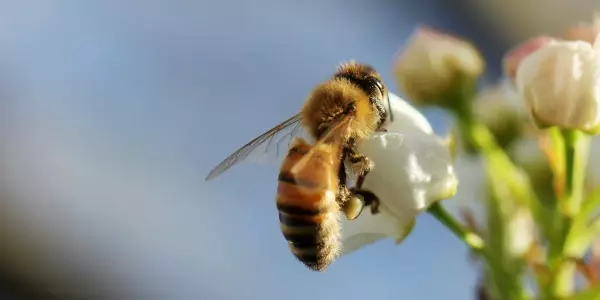When temperatures increase, bees tend to forage more frequently and cover larger distances in search of food, which can increase their exposure to pesticides. In addition, higher temperatures can also increase the toxicity of some pesticides, making them more harmful to bees. This is because higher temperatures can accelerate the breakdown of some pesticides into more toxic compounds, and also cause bees to become more susceptible to the toxic effects of these chemicals.
According to a new study, temperature influences how badly pesticides affect bee behavior, implying that the effects of climate change are uncertain. According to the findings, future extreme temperature events caused by climate change may increase the impact of pesticides on bee populations and pollination services.
Certain pesticides, particularly neonicotinoids, are known to have an impact on bees and other important insects and are thought to be contributing to population declines. However, bees’ reported responses to this threat appear to vary across the globe, implying that other interacting factors are at work.
Now, researchers from Imperial College London have shown that environmental temperature can influence the degree to which pesticides can alter a suite of bumblebee behaviors important for their survival and ability to pollinate crops. The study is published today in Global Change Biology.
Our findings show that environmental context is crucial when assessing pesticide toxicity, particularly when projecting bee responses under future climate change.
Daniel Kenna
Pesticide effects on flight under heat waves
The researchers observed six bumblebee behaviors at three temperatures (21, 27, and 30°C) while exposed to two pesticides (the neonicotinoid imidacloprid and the sulfoximine sulfoxaflor).
At lower temperatures, imidacloprid had a stronger effect on four of the behaviors: responsiveness, likelihood of movement, walking rate, and food consumption rate. This suggests that cold snaps may increase pesticide toxicity on nest-related behaviors.
However, at the highest temperature, imidacloprid had the greatest effect on a key behavior: how far the bees could fly. This relationship demonstrated a significant drop-off, with flight distance measuring the same between 21 and 27°C before dropping sharply when reaching 30°C.

Lead researcher Dr. Richard Gill, from the Department of Life Sciences (Silwood Park) at Imperial, said: “The drop-off in flight performance at the highest temperature suggests a ‘tipping point’ has been reached in the bees’ ability to tolerate the combined temperature and pesticide exposure. This seeming cliff-edge effect happens over the span of just three degrees, which changes our perception of pesticide risk dynamics given such temperature changes can commonly occur over the space of a day.”
“Furthermore, the frequency to which bees will be exposed to pesticides and extreme temperatures under climate change are predicted to increase. Our work can help to inform the right concentrations and application times of pesticides across different climatic regions of the world to help safeguard pollinators, such as bees.”
Pollination problems
Flight distance is critical for pollination because it supports foraging potential and contributes to food security via crop pollination. Although the tropics are generally hotter, insect pollinator populations in more temperate latitudes, including the UK, may be more sensitive to pesticide effects due to larger temperature ranges.
Bees pollinate a wide range of important cereal crops, as well as legumes and fruit trees. Demand for their pollination services will rise as our food supply diversifies, but so will the stresses bees face as a result of climate change and increased insecticide use.
This work quantifying the relationships between temperature and pesticide impact should help towards modelling the risks of pesticides across different regions of the world as the climate shifts, say the researchers. First author Daniel Kenna, from the Department of Life Sciences (Silwood Park) at Imperial, said: “Our findings show that environmental context is crucial when assessing pesticide toxicity, particularly when projecting bee responses under future climate change.”
“These results are important for developing a toxicity forecast framework, allowing us to predict how bee populations will respond to climate change while living in intense agricultural landscapes,” said co-author Dr Peter Graystock of Imperial’s Department of Life Sciences (Silwood Park).
The researchers plan to conduct more extensive studies across the temperature gradient to determine how toxicity effects scale with temperature and where tipping points may exist across a variety of species.
















